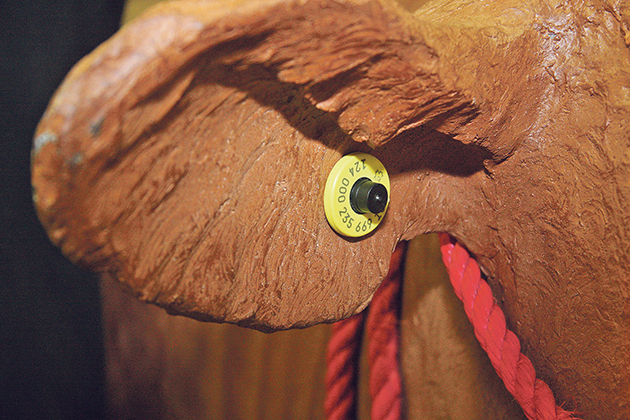Radio frequency tags required for Canada’s national cattle traceability program don’t necessarily last until the cows come home.
The final report on the Canadian Cattle Identification Agency’s tag retention study, released Jan. 31, showed good tag retention in young cattle but poorer results in mature cows.
That matches the general cattle producer experience, said CCIA board chair Mark Elford, who also chairs the tag retention project committee.
“I think anecdotally, most producers would tell you that when they’re shipping their cull cows, that they’re replacing probably 25 percent of those tags. But again that’s anecdotally. That didn’t come out of the study … but it’s things we know because of what people are telling us.”
Read Also

Beef check-off collection system aligns across the country
A single and aligned check-off collection system based on where producers live makes the system equal said Chad Ross, Saskatchewan Cattle Association chair.
That very observation was the reason behind the four-year retention study, in which 2,000 calves, 1,000 yearlings and 700 cows were tagged with a variety of approved CCIA RFID tags and brands.
The overall retention rate for calves was 96 percent, according to study results, and six of the participating ranches reported no tag loss at all.
In yearlings, retention was also high at an average 99 percent.

The CCIA board chair says the four year tag retention rate on cows of 82 percent is “a bad fail.” | File photo
Cows were another story. The average retention was 82 percent at the end of the study, although not all cows that began the study remained at its end.
“When we’re down to 82 percent in four years, to me that’s a bad fail,” said Elford.
“There’s guys that keep cows until they’re 15 years old. … Anywhere past three years old and onward, the tags are all failing miserably. Some performed better than others but I would say that they all failed where the older cattle are concerned.”
The survey provides the CCIA with statistically reliable data to take to tag manufacturers, said Elford.
“I think we knew that we had a problem in the cows and I think we knew that our retention was pretty decent on calves and even out to yearlings, but when you go to talk to tag companies, they’re not going to listen to you if you don’t have some real solid information. That’s why we have to do this kind of work.”
The study involved various types of operations, large and small, in different management conditions and geographic locations.
Tag failure appeared mostly related to the back button or stud part behind the ear, which splits or loses a piece and then allows the front part of the tag to fall off.
In terms of readability, all tags tested and retained could be read, according to CCIA data.
In the next phase of the study, the various brands and tag types will be subjected in the lab to ultraviolet light, chemicals, biological exposure and temperature stress.
Paul Laronde, CCIA tag and technology manager, is running that study with the goal of identifying which tag brands stand up best.
“Basically, what we’re looking at is if somebody came up with something that has better retention, we’re going to gravitate toward that because producers don’t like to be retagging animals that they’ve already tagged,” said Elford.
Under traceability regulations, animals cannot leave the farm without having an RFID tag.
More information on the study is available at www.canadaid.ca.

















